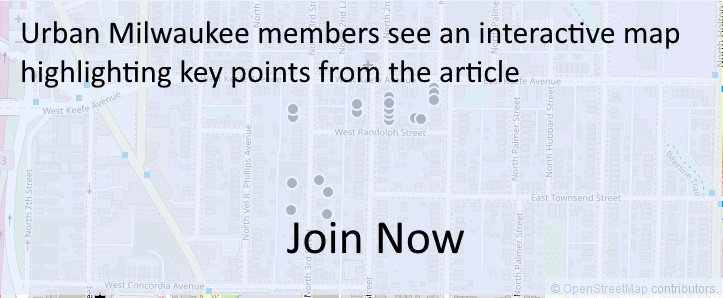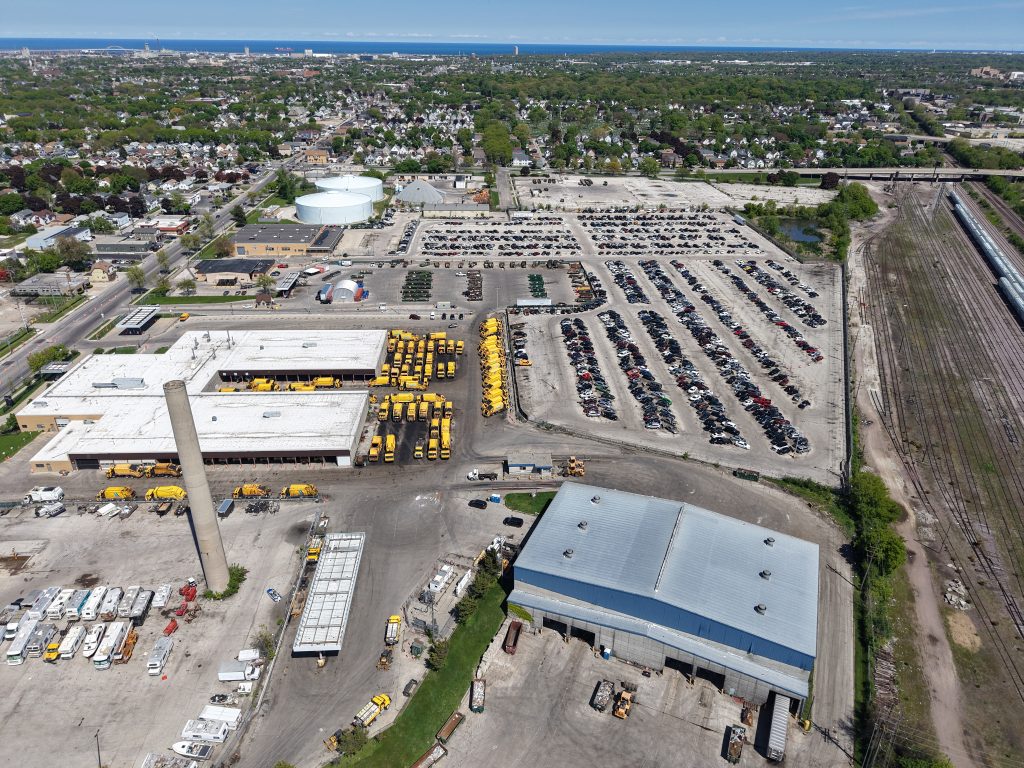Milwaukee Again Exploring Third Drop-Off Center
But will it be able to find a location?
The City of Milwaukee’s white whale surfaced Wednesday for an animated discussion.
The Department of Public Works (DPW) again completed a preliminary study of the costs to develop a third drop-off center.
It’s something the council and DPW have sought for several years as a way to reduce illegal dumping, increase accessibility for residents and streamline DPW operations. But everything from the cost to the location has proved to be a barrier.
“We don’t have a site. We don’t have funding. We are working on both,” said DPW sanitation services manager Rick Meyers to the Public Works Committee. He said a $5 million grant request was submitted to the Environmental Protection Agency and the city anticipates learning the result later this year.
The South Drop-Off Center is located at 3879 W. Lincoln Ave., alongside several other DPW functions. The North Drop-Off Center is located at 6660 N. Industrial Rd. Both facilities operate six days a weeks and draw a total of approximately 250,000 visits annually. The southside center gets nearly double the traffic of its northside counterpart.
The facilities, which visibly are a collection of huts and dumpsters, accept recycling, garbage, construction debris, tires and, in partnership with the Milwaukee Metropolitan Sewerage District, some types of potentially hazardous waste.
DPW last publicly studied a third drop-off center in 2021 and concluded it would cost a minimum of $10.85 million to develop. The latest estimate, prepared as a result of a budget footnote authored by Ald. Mark Chambers, Jr., says the cost has risen to $10.96 million. Adding a transfer station, a desired DPW feature that would be used to consolidate and haul waste from trucks and on-site collections, would raise the cost to $21.5 million.
Operating just a drop-off center would cost $3 million annually, while adding the transfer station would reduce the annual operating cost to $2.17 million because it would streamline DPW operations.
A drop-off center would require approximately four acres of land, while adding a transfer station would boost the total to eight acres.
DPW estimates that adding a third drop-off center in a central city location would increase revenue by approximately $950,000. It could also yield revenue from opening up access. “If there were to be extra capacity at the drop-off centers, that could be a potential to open it up to surrounding communities, which would be a charged fee,” said DPW resource recovery manager Laura Stevens. She said that revenue potential wasn’t immediately studied.
Meyers said DPW didn’t identify a specific location in its study, but said it would like a site generally between the two existing drop-off centers, but to the east. “That would be probably where we would have the biggest benefit,” he said.
“I know people on the East Side would appreciate a location like that,” said Ald. Alex Brower.
Committee chair Alderwoman Milele A. Coggs asked if DPW owned any possible sites in that area.
“This is part of a broader DPW facilities need,” said Meyers. He said the department was working with the Department of City Development (DCD) on finding a site. Mayor Cavalier Johnson‘s 2026 budget proposal also calls for moving the Electrical Services building out of the Menomonee Valley. “We’re still in the hypothetical right now.”
“Why are we still at hypotheticals when this is the third time this came up?” said Chambers.
“We don’t have a site,” said Meyers.
Ald. Robert Bauman encouraged DPW to pursue the site at 3940 N. 35th St. in Century City, which was used for the 2021 study. Then-area alderman Khalif Rainey and DCD opposed that plan.
Meyers said “pieces” of a possible site would be in the 2026 budget, scheduled to be presented in detail later this month.
Chambers suggested a future footnote would instruct DPW to find a specific site.
“I just expected a little deeper analysis on potential locations,” said Coggs. Meyers said that is what is happening with DCD, but Coggs said DPW approached the effort within the confine’s of the mayor’s 2026 budget instead of the council’s directive.
“This is about as close as we can get with a hypothetical,” said Meyers.
“It’s good to have a study, but it’s better to have a study that leads to a solution,” said Ald. Larresa Taylor.
Meyers said Commissioner Jerrel Kruschke would offer more clarity on DPW’s space needs during its October budget presentation. There is also the outstanding question of the long-term plan for replacing the city’s recycling sorting facility.
Legislation Link - Urban Milwaukee members see direct links to legislation mentioned in this article. Join today
Existing members must be signed in to see the interactive map. Sign in.
If you think stories like this are important, become a member of Urban Milwaukee and help support real, independent journalism. Plus you get some cool added benefits.
Political Contributions Tracker
Displaying political contributions between people mentioned in this story. Learn more.
- February 20, 2016 - Cavalier Johnson received $250 from Robert Bauman
- February 13, 2016 - Milele A. Coggs received $10 from Larresa Taylor





















Or keep the existing locations open longer and open them on Sundays.
There’s only one day a week that the dumps are open after 3 PM (Tuesdays until 6 PM). How are folks on a standard 8-5 work schedule supposed to use the drop off centers? Saturday hours of 8 AM To 2 PM dont help the weekend warrior crowd, either.
Using existing assets is way cheaper than allocating more space to dumps, and in the era of budget constraints it seems really simple to offer more at what already exists.
I’m certain that a dumping facility is an undesirable use in neighborhoods. You only have to go to either site to see the queues of vehicles, trash that has fallen out of vehicles and loud music to know you wouldnt want to live near one.
Mrs. Roger Dorn: Agree!! And I’m an east sider. Extended hours of at least one of the sites would be far more useful than opening another site that neighbors would hate.
@Mrs. Roger Dorn…what you say also makes sense to me. This has been framed, not as a capacity issue, but an accessibility issue. Try early evening and later weekend hours, first.
I don’t even live in Milwaukee but had cause to go to one of the outlying Chicago dumps a couple years ago for a drop-off. Talk about “Beyond Thunderdome!” Was like the end of the world, post-apocalyptic…